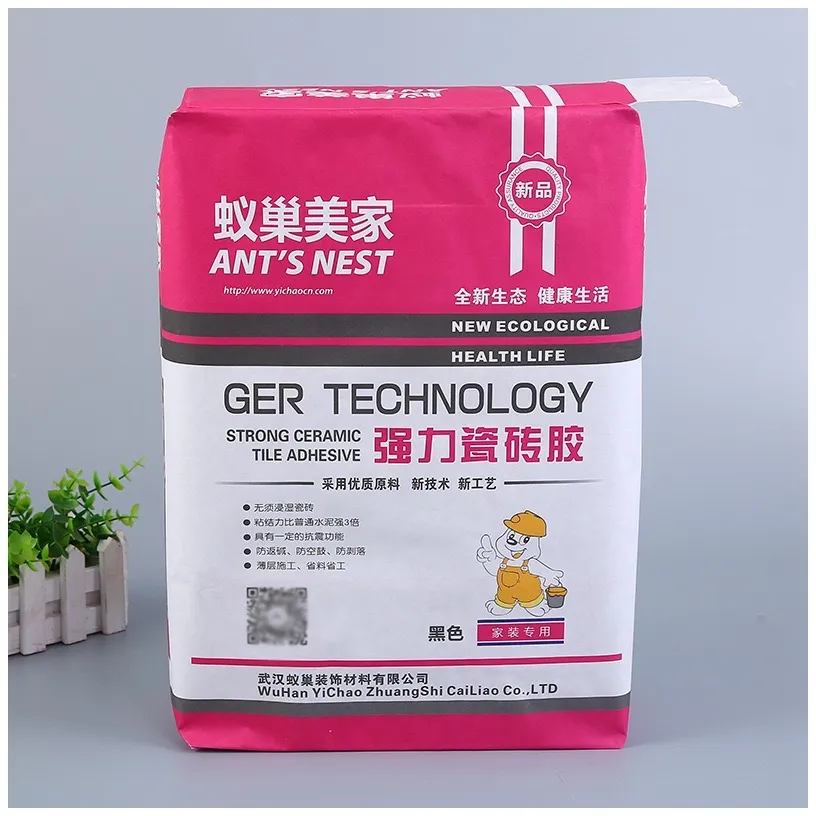
The packaging industry has witnessed a surge in the utilization of BOPP Valve Woven Bags, known for their durability, versatility, and effectiveness in various applications. One significant enhancement to these bags is the incorporation of a lamination layer. This blog explores the necessity of lamination for BOPP Valve Woven Bags, their characteristics, and provides a detailed overview of the production process, highlighting the advanced technology and automation provided by Starlinger equipment.
Why Laminate BOPP Valve Woven Bags?
BOPP (Biaxially Oriented Polypropylene) laminated valve woven bags have become a preferred choice for packaging various materials, particularly in industries like agriculture, chemicals, and construction. The lamination process adds a layer of protection and enhances the bag’s overall performance. Here are some critical reasons for using lamination in these bags:
- Moisture Resistance: The lamination layer provides excellent moisture barrier properties, protecting the contents from humidity and damp conditions. This feature is especially vital for products like fertilizers, grains, and chemicals that can be adversely affected by moisture.
- Increased Strength and Durability: Lamination enhances the physical strength of the woven bags, allowing them to withstand rough handling during transportation and storage. This added durability translates to fewer damages and lower replacement costs.
- Enhanced Print Quality: The smooth surface of laminated bags allows for high-quality printing. Companies can effectively brand their products with vibrant graphics and essential information, making them visually appealing and informative for consumers.
- Resistance to UV Rays: Lamination helps protect the contents from ultraviolet (UV) radiation, which can degrade certain products over time. This property is especially crucial for outdoor storage or transportation.
- Flexibility in Customization: Laminated bags can be tailored for specific applications, with options for custom sizes, colors, and prints. This versatility allows businesses to meet diverse packaging needs.
- Sustainability: Many manufacturers are now focusing on eco-friendly materials, and BOPP laminated bags can be produced with recyclable materials, contributing to sustainable packaging solutions.
Production Process of BOPP Valve Woven Bags
The production of BOPP Valve Woven Bags involves several key steps, each of which is crucial to ensuring the quality and performance of the final product. At VidePak, all our equipment comes from the renowned supplier Starlinger, which ensures a high level of automation and efficiency throughout the production process.
1. Extrusion and Film Production
The first step in the production process is the extrusion of polypropylene to create BOPP film. In this phase:
- Polypropylene granules are melted and extruded to form thin films.
- The extrusion process is tightly controlled to maintain consistent quality.
- Starlinger’s advanced technology allows for high-speed production, resulting in excellent film thickness and clarity.
2. Weaving
Once the BOPP film is produced, it is woven into a fabric using circular looms. This step includes:
- The film is processed into yarns that are interlaced to create a sturdy, woven fabric.
- Starlinger’s circular looms ensure precise weaving with a high production capacity, achieving line speeds of over 200 pieces per minute.
- The woven fabric offers superior strength, making it suitable for heavy-duty applications.
3. Cutting and Sewing
The woven fabric is then cut into specific dimensions based on customer requirements:
- The cut pieces are sewn together to form the bags, incorporating valve openings for easy filling.
- Automatic sewing machines from Starlinger enhance sewing efficiency, ensuring consistent quality and reducing labor costs.
4. Printing and Coating
Next, the bags undergo printing and coating:
- High-quality printing is applied to ensure vibrant colors and clear branding.
- A lamination layer is added, which can include various coatings such as PE or adhesive, depending on the intended application.
- Starlinger’s printing technology supports multi-color prints and high-resolution images, providing an attractive finish.
5. Inspection and Quality Control
Quality control is paramount in the production of BOPP Valve Woven Bags:
- Each batch of bags is inspected for defects in printing, weaving, and overall construction.
- Automated quality checks are integrated into the production line, ensuring that only bags meeting strict quality standards are packaged and shipped.
6. Packaging and Delivery
The final step involves packaging the finished bags for delivery:
- Bags are neatly folded and packed into bales or cartons, ready for shipment.
- Efficient packaging systems help maintain product integrity during transit, ensuring they reach customers in pristine condition.
Conclusion
The production of BOPP Valve Woven Bags involves a meticulously controlled process that combines high-quality materials with advanced manufacturing techniques. The addition of lamination not only enhances the bags’ durability and resistance to environmental factors but also provides branding opportunities for businesses. At VidePak, our commitment to excellence is reflected in our choice of Starlinger equipment, ensuring that we deliver high-performance, customized packaging solutions to meet the diverse needs of our clients.
| Product Parameter | Value |
|---|---|
| Material | BOPP (Biaxially Oriented Polypropylene) |
| Bag Types | Valve Woven Bags, Valve PP Bags, Block BOPP Bags |
| Production Capacity | 200 pieces per minute |
| Customization Options | Size, color, print design |
| Moisture Resistance | High |
| UV Resistance | Yes |
| Typical Applications | Agriculture, chemicals, construction |
| Sustainability | Recyclable materials available |
For more insights into the benefits and applications of BOPP Valve Woven Bags, please visit our link on BOPP Valve Woven Bags.